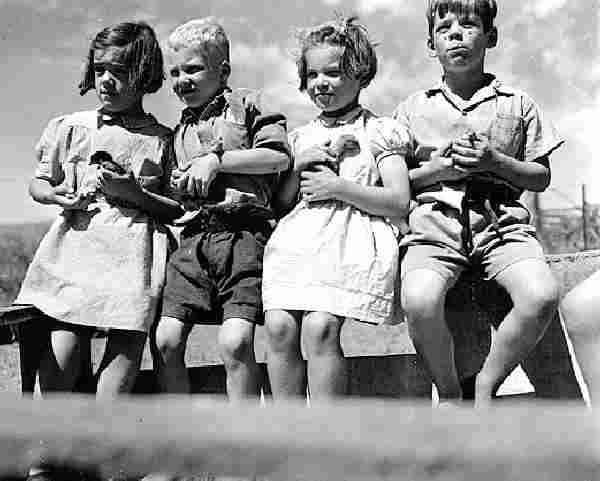
Figure 1.--These British child migrants at the Fairbridge Farm School at Molong, NSW, during 1954. The Fairbridge Foundation brough indigent children to Australia fom Brtain. |

|
The subject of orpahanges is an especially sensative one in Australia. Britain pursued a child migration program in which young Britons were forcibly shipped to Australian orphanages. As one advocate of empire termed it, 'every child a pioneer of the Empire'. It was not a new concept. The first 100 English child 'vagrants' were despatched from the London area to Virginia in the Americas in 1618, their passage arranged by the City Fathers. The organized program apparently began in the early 20th century. Deportations were also made to Canada, Rhodesia, New Zealand and Australia . These deportations reportedly occurred as late as World War II and the late 1960s.
The subject of orpahanges is an especially sensative one in Australia. Britain pursued a child migration program in which young Britons were forcibly shipped to Australian orphanages. Child migration was a separate category from youth migration or juvenile migration. Child migrants were apparently-abandoned, illegitimate, poverty-stricken children of primary school age who were usually in care in the United Kingdom before their despatch to Australia. This program is quite different from other youth programs in which older children had actually volunteered to come to Australia. The child migrants were too young to really understand what was being done to them. Many of these children, separated from their parents and familiar surroundings, suffered from the disruption and dislocation.
As one advocate of empire termed it, "every child a pioneer of the Empire". It was not a new concept. The idea was clearly to expand the white population of Britain's colonies.
The first 100 English child "vagrants" were despatched from the London area to Virginia in the Americas in 1618, their passage arranged
by the City Fathers. The organized program apparently began in the early 20th century. Deportations were also made to Canada, Rhodesia, New Zealand and Australia . These deportations reportedly occurred as late as World War II and the late 1960s. The last nine children were flown to Australia in 1967 under the auspices of Barnardo�s.
Most of the children brought to Australia were boys from the British Isles. They constituted the great majority of the children. There were a few exceptions. During the war, some Polish Jewish children managed to reach Australia. I'm not sure how they managed to escape NAZI-occupied Poland. Some groups, all boys, came from Malta after World War II. Malta was one of the most heavily bombed places during the War. Both the Italians and Germans battered the Island for nearly 2 years.
A very substantial number of individuals were involved in the institutional program of migrant and aborigine children. There are no precise numbers. The numbers involved appear to be about 50,000 Australian children (40,000 aboriginal and 10,000 European-ancestry children) and about 200,000 foreign, mostly British children. [Murray]
The children were brought to Australia from their home countries under various migration schemes which commenced with the sponsoring of farm boys to New South Wales by the Dreadnought Trust in 1911. Another important program was the Fairbridge Foundation which sponsored farm schools.
On arrival in Australia, child migrants were placed in care (ie in children�s homes or orphanages) for further training before placement in employment.
The migration schemes, while supported by government in principle, were managed and administered by charitable bodies and the mainline churches. They include
the Big Brother Movement, the Children�s Farm School Immigration Society of Western Australia (Fairbridge), Dr Barnardo�s Homes and the Overseas
Children�s Scheme which operated during World War II. Essentially governments provided the ground rules, gave some financial support and monitored their
activities. It was the voluntary associations that did most of the day-to-day work with juvenile migrants.
Many of the people involved as children are now demanding an investigation. Many of the estimated 10,000 former child migrants still living in Australia allege they suffered emotional, mental and other abuse in orphanages, and want the Government to match the British Government's $2.5 million travel fund allocated to reunite victims with their relatives. They are also seeking compensation for their suffering and additional funding for the Child Migrants Trust, an Australian organisation that provides counselling and help with family research and reunion. The child migrants are demanding a full judicial inquiry into orphanages and reasons for their "deportation" to Australia, which they claim was an attempt to help populate the country with "good healthy white British stock".
Murray, Andrew. "Child migration schemes to Australia: A dark and hidden chapter of Australi's history revealed," 1st Intrnational Congress on Child Migration, New Orlens, Louisiana, August 27-2, 2002. Murray is a senator for Western Australia who was shipped toSouthern Rhodesia under the Fairbridge Scheme, but eventually went to Australia. His address to the Congress recounts the great abuse that the children suffered, often at the hands of religious xtaff.
Navigate the Historic Boys' Clothing Web Site:
[Return to the Main Australian orphanage page]
[Return to the Main charity institutional page]
[About Us]
[Introduction]
[Activities]
[Biographies]
[Chronology]
[Cloth and textiles]
[Countries]
[Garments]
[Girls]
[Photography]
[Topics]
[Bibliographies]
[Contributions]
[FAQs]
[Glossaries]
[Images]
[Links]
[Registration]
[Search]
[Tools]
[Boys' Clothing Home]
